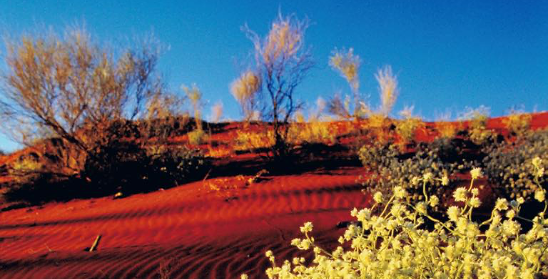Adapting to climate change in Australia’s rangelands

Angus Emmott
In line with current forecasts, Australia is set to experience substantial warming and more frequent extreme climate events as a result of climate change. Temperatures are forecast to increase with more frequent and intense heatwaves, continuing high variability in annual rainfall, increased intensity of heavy rainfall, a probable increase in the frequency and severity of drought and increased periods of high fire-danger weather are all likely to be experienced.
Changes will be required in extensive rangeland grazing herd management, including stocking rate decisions informed by longer-term (e.g. sub-seasonal to seasonal to multi-year) climate forecasts, changing heat-sensitive operations to relatively cooler months, and relocating fences and tracks away from more erodible lands. A longer-term transformational change is already taking place, with moves to a different form of livestock production, combined with drought-proofing activities and diversifying sources of income within and beyond the pastoral enterprise: adaptation has always been an ongoing challenge for Australian livestock producers and a feature of production systems.
The Northern Australia Climate Program (NACP) operates across the rangelands in the northern half of Australia. It improves existing climate models and forecasting tools, develops new products to meet the needs of pastoralists and builds the capacity of pastoralists to manage the challenges posed by future droughts or failed wet seasons as well as climate variability. Extension staff are local people, who are based across northern Australia, and run workshops and liaise with pastoralists in their region. Many are local pastoralists themselves, which give them credibility as well an understanding of the local context. In addition, at the national level, the federal government is in investing millions in a Future Drought Fund, with hubs around various states. Further such responses will continue to be needed together with policy change, structural adjustment and development of new breeds and technologies.
For more information see:
Bastin G, Stokes C, Green D and Forrest K (2014) Australian rangelands and climate change – pastoral production and adaptation. Ninti One Limited and CSIRO, Alice Springs. http://www.nintione.com.au/resource/AustralianRangelandsAndClimateChange_PastoralProduction.pdf
For more on the methods for the thresholds mapped:
https://cgspace.cgiar.org/handle/10568/3826 and https://www.ifpri.org/publication/atlas-african-agriculture-research-development
For more information on climate change impacts on pastoralism see Climate change and pastoralism: impacts, consequences and adaptation. M. Herrero, J. Addison, C. Bedelian, E. Carabine, P. Havlik, B. Henderson, J. van de Steeg and P. Thornton. Rev. Sci. Tech. Off. Int. Epiz (2016) Vol. 35 (2).
Terminologies used
CV of annual rainfall is an index, expressed as a percentage, of climatic risk. It estimates the rainfall variability in an area where the higher the CV, the more variable the year-to-year rainfall of an area is. LGP (length of growing period) is the average number of growing days per year (where rainfall and moisture stored in the soil exceeds half of potential evapotranspiration) and can be interpreted as a proxy for the number of grazing days too.
The source of all these projections to 2015 are made using a high-emissions scenario (RCP8.5) developed by the Intergovernmental Panel on Climate Change and data form an ensemble of 17 climate models taken from the fifth phase of the Coupled Model Intercomparison Project (CMIP5) of the World climate Research Program.